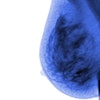As a first step in determining how digital mammography will fit into the radiology practice routine, researchers from the International Digital and Mammography Development Group conducted a display preference study among radiologists, the results of which appear in the September issue of Radiology.
Lead by Dr. Etta Pisano, chief of breast imaging at the University of North Carolina in Chapel Hill, the group "sought to determine the preferences of radiologists for algorithms used in two main tasks in mammography: lesion detection (screening) and characterization (diagnosis)" (Radiology, September 2000, Vol.216:3, pp.820-830).
The study protocol began with 10 cases obtained on three full-field digital mammography devices: Trex Digital Mammography System (Trex Medical of Danbury, CT), SenoScan (Fischer Imaging of Denver), and Senographe 2000D (GE Medical Systems of Waukesha, WI). The images were eligible for the study if a comparable film-screen image also was available.
Using eight different algorithms, including manual intensity windowing, histogram-based intensity windowing, unsharp masking, and Trex processing, a total of 225 images were processed. The latter Trex images were printed on helium-neon film with an eight bits per pixel printer. The other images were printed on film with a 12 bits per pixel laser printer.
"A total of 65 lesions were identified and were circled on the two views of a single version of the digitally printed image of the patient’s digital mammogram," the group explained. The images were then presented to a dozen radiologists who were asked to rate them on the "visibility and characterizability" of each lesion on the processed digital image, as well as whether the images offered enough information to make a correct diagnosis.
Finally, the readers were asked to rate the processed digital images on a scale ranging from "much better" to "much worse" than the film-screen images.
Some of the results for the three systems were as follows:
Trex Digital Mammography System
For the mass diagnostic test, images processed with histogram-based intensity windowing and the Trex algorithm were significantly preferred. For the detection of masses, Trex processing was preferred, although not overwhelmingly, the group stated.
SenoScan
For the diagnostic evaluation of masses, printed digital mammograms were preferred over the film-screen version with all eight processing algorithms. For the diagnostic evaluation of calcifications, three of the digital images were deemed slightly better than film-screen.
Senographe 2000D
For the mass diagnostic task, the digital image processed with unsharp masking had a slight edge over the film-screen image. For detecting both masses and calcifications, the film-screen mammograms fared better than the digital radiographs, in the opinion of the readers.
Overall, the group concluded that the readers "prefer digitally processed versions of the digital mammogram depending on the task, lesion, type, and machine type. This finding suggests that digital mammograms would be best displayed by using monitor systems that allow flexibility and easy, quick access to differently processed versions of images."
Pisano and her co-authors emphasized that their study was not a qualitative measure of how well the radiologists performed using the digital images. In addition, the limited number of algorithms tested was based on what was available at the various institutions involved in the study, as well as what the researchers considered as having the most clinical utility.
However, the information gleaned from this survey could help the manufacturers of digital mammography systems decide which algorithms would be best for optimal display, they said.
"Given the preferences of radiologists and the present limitations of soft-copy technology, digital mammograms will most likely be displayed on film for the next few years at least," they wrote. "Therefore, exactly how the images should be printed is an important issue."
By Shalmali PalAuntMinnie.com staff writer
August 31, 2000
Let AuntMinnie.com know what you think about this story.
Copyright © 2000 AuntMinnie.com



















